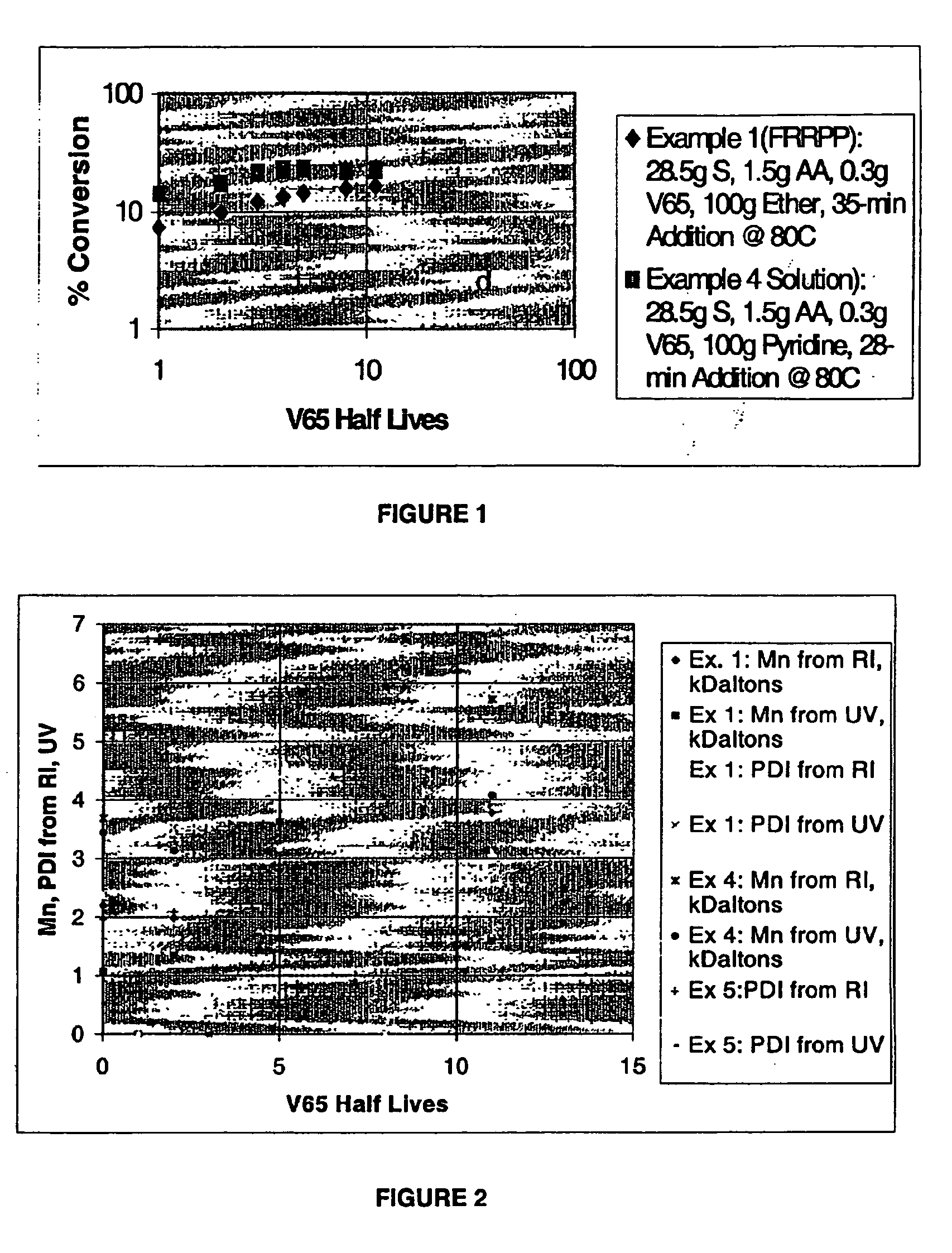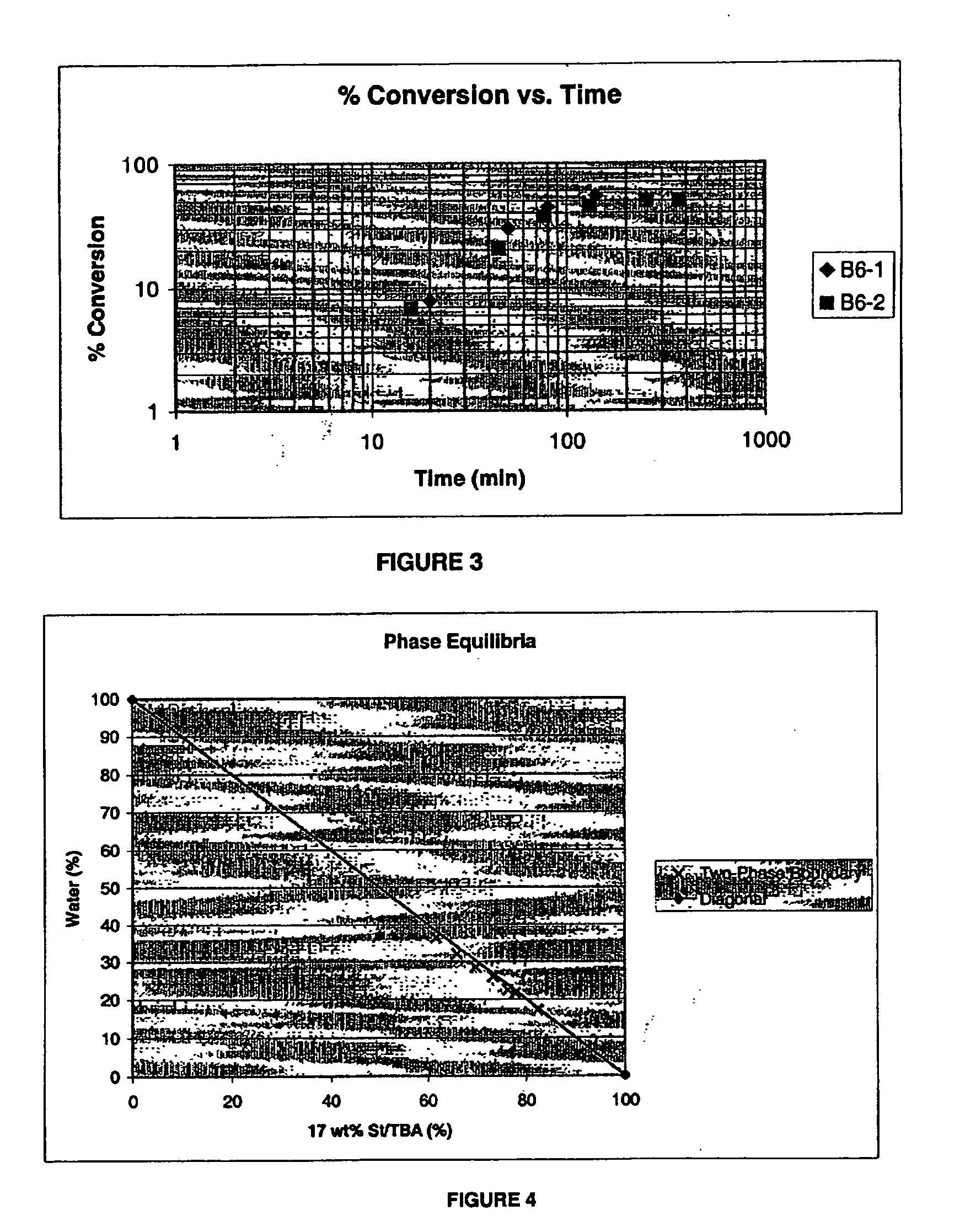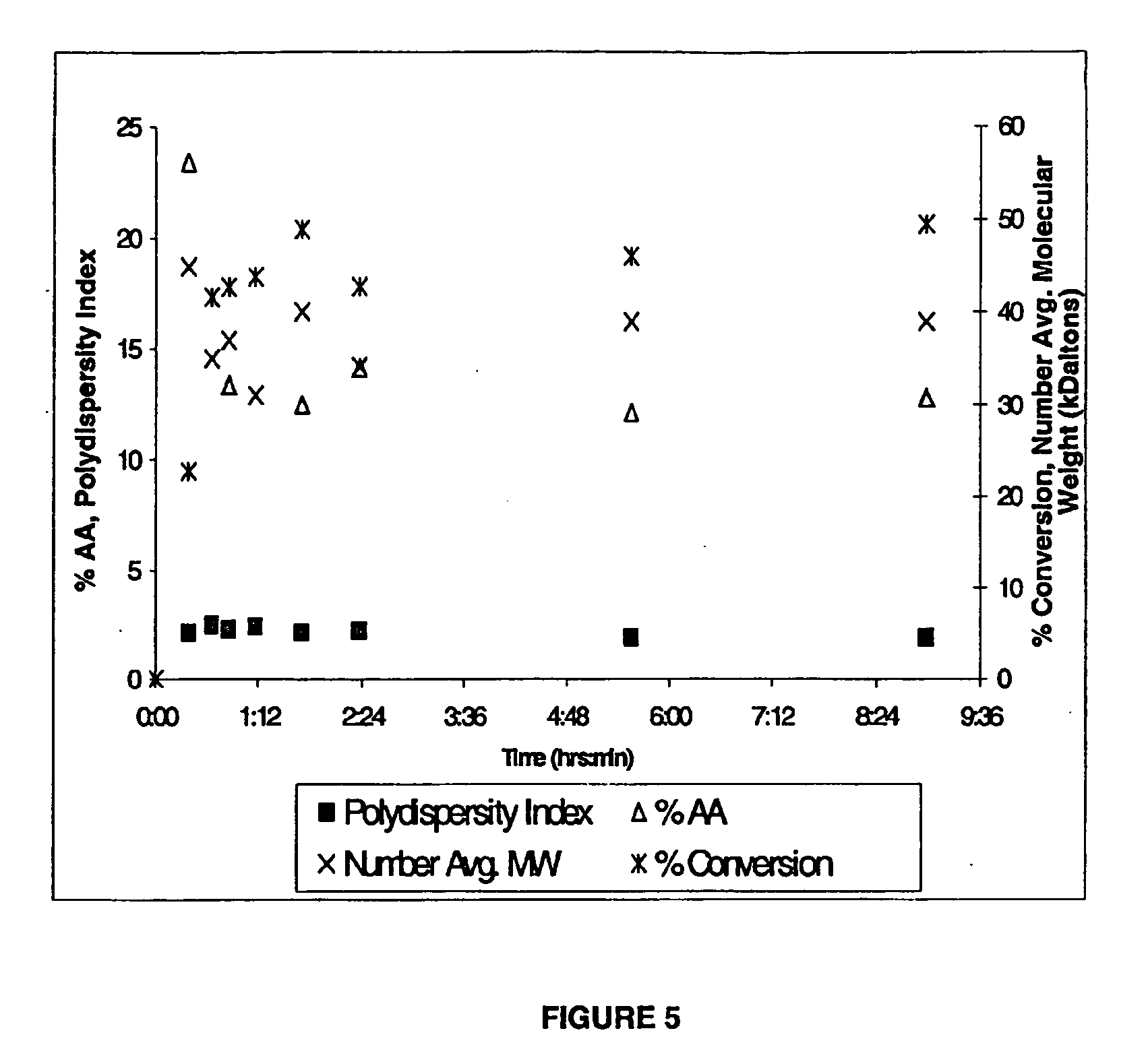Free radical retrograde precipitation copolymers and process for making same
a copolymer technology, applied in the single-stage free radical retrograde precipitation polymerization process, can solve the problems of low conversion rate, lack of control of the resultant polymer structure, and relatively expensive procedur
- Summary
- Abstract
- Description
- Claims
- Application Information
AI Technical Summary
Benefits of technology
Problems solved by technology
Method used
Image
Examples
example 1-5
Single Stage FRRPP Process for S / AA Copolymer
[0042] Copolymers of styrene and acrylic acid (S / M) were polymerized in ether (FRRPP) using the following basic recipe:
[0043] Example 1: 100 g ether, 0.3 g V-65, 30 g monomers. All fluids used were purged with nitrogen gas by bubbling the gas for at least 15 minutes. At the outset, 80 g diethyl ether and 1 g AA were fed into a 300-ml Parr reactor system at room temperature. The reactor fluid was raised to its operating temperature of 80° C. Then, 0.5 g AA, 28.5 g S, and 0.3 g V65 were pumped into the reactor in 28-35 minutes to start the polymerization.
[0044] Example 2: The reaction was run as in Example 1, but at a temperature of 60° C.
[0045] Example 3: The reaction was run as in Example 1, using a total of 3 g of AA and 27 g of styrene.
[0046] Example 4 (Comparative) The reaction was run as in Example 1, using pyridine as the solvent rather than diethyl ether. Pyridine is a solvent for both polystyrene and poly (acrylic acid), there...
example 6
Single Stage FRRPP Polymerization of VA / AA Block
[0054] Formation of VA / AA copolymer is accomplished by starting with a reactor containing all the monomers and kicking off the reaction by adding the initiator solution. The idea is that most of the AA will react at the early stage and subsequent chain extension will occur with VA addition. The solvent is azeotropic t-butanol / water and initiator is VA-044. These runs were done at reduced amounts of initiator in order to minimize premature termination of AA-containing chains; thus, minimizing the formation of random copolymer.
[0055] Two separate polymerizations were performed to produce a block copolymer with 6 wt % AA (B6-1 and B6-2) in a 1-liter glass reactor system. The reactor was initially charged the following reagents: 310.7 g azeotropic t-butanol / water, 2 g AA, and 72.4 g VA. Then, the temperature was raised to 65° C. in 30 minutes while slowly purging the reactor with nitrogen gas. After the operating temperature was reached,...
example 7
[0058] The polymer of Example 6 was tested for surfactancy behavior. Polymer B6-1 was neutralized by ammonia in water. For an OIW emulsion with an organic phase of 17 wt % styrene in t-butyl acetate, the use of ammonia-neutralized B6-1 revealed relatively large homogenous regions, shown in FIG. 4. This is not surprising because the PVA-rich block of B6-1 has good affinity to the organic phase.
PUM
| Property | Measurement | Unit |
|---|---|---|
| Fraction | aaaaa | aaaaa |
| Fraction | aaaaa | aaaaa |
| Fraction | aaaaa | aaaaa |
Abstract
Description
Claims
Application Information
 Login to View More
Login to View More - R&D
- Intellectual Property
- Life Sciences
- Materials
- Tech Scout
- Unparalleled Data Quality
- Higher Quality Content
- 60% Fewer Hallucinations
Browse by: Latest US Patents, China's latest patents, Technical Efficacy Thesaurus, Application Domain, Technology Topic, Popular Technical Reports.
© 2025 PatSnap. All rights reserved.Legal|Privacy policy|Modern Slavery Act Transparency Statement|Sitemap|About US| Contact US: help@patsnap.com



